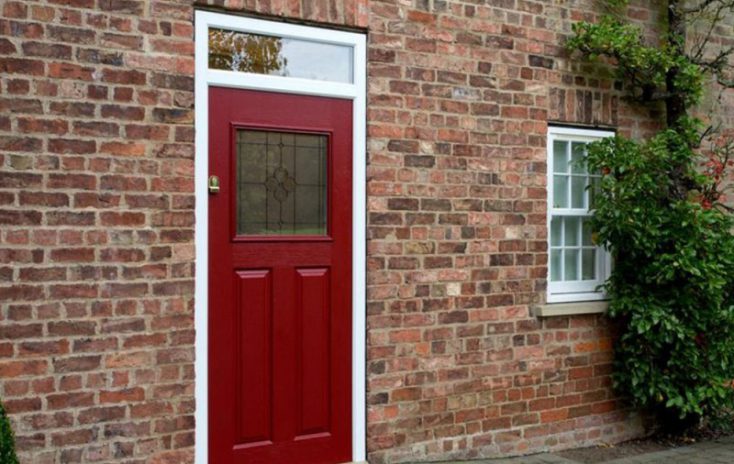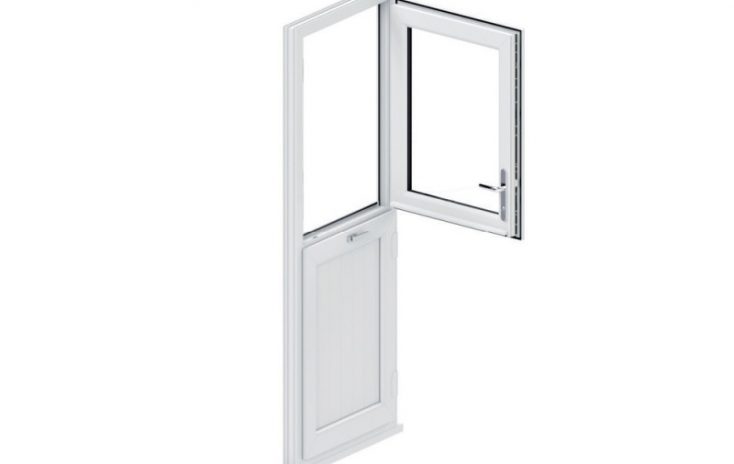It’s hard to imagine a world without windows and doors. These humble elements of our homes and workplaces have a surprisingly rich and fascinating history, dating back to the industrial revolution. This blog post will look at the changes in technologies and trends throughout the years that have led us to where we are today. We’ll also explore how digital advancements have changed how we use windows and doors, as well as the beginning and progression of uPVC fenestration.
The first windows
Windows and doors have been around for centuries. The first windows were made from paper in ancient China, Korea and Japan, while the Romans were the first known to use glass for windows around 100 AD. These early Roman windows were made of small pieces of clear glass set in wooden frames. They provided a way to let light into a room and served as an air vent.
The industrial revolution brought about many societal changes, including new technologies that led to modern windows and doors. In the early 1800s, cast iron became widely available, which led to the manufacture of window frames that could be mass-produced.
The transformation of windows and doors with uPVC
Both French chemist Henri Victor Regnault and German chemist Eugen Baumann accidentally discovered PVC in 1838 and 1872, respectively, but neither realised the product’s potential nor patented it. It was the German chemist Friedrich Klatt who first understood the potential of PVC and patented it in 1913.
The first uPVC windows and doors
The B.F. Goodrich Company developed a method to plasticise PVC in 1926 in order to make it less brittle. In 1935 uPVC (unplasticized Polyvinyl Chloride) was manufactured for the first time. The first commercial available uPVC windows were installed for the first time in 1959 in Germany.
uPVC windows and doors rose in popularity throughout Europe, and Germany brought the uPVC system to the UK in the late 1970’s. The UK developed different window profiles for British homes and offices. It boomed in popularity around the mid 1980s continuing to the 2000s where it began to compete with wooden and aluminium windows and doors due to the easy production, low-maintenance, comparatively lower costs, and various style options from around 2010.
uPVC is an energy-efficient material, which also helped its popularity, helping to keep customers’ bills that bit lower. With these window and door frames being leak-free and airtight and weathering most weather conditions well, eventually, uPVC overtook in popularity to become the most popular material for window and door frames. Unlike aluminium windows which require a thermal break to achieve similar levels of thermal insulation, uPVC achieves this naturally.
Window and door functionality advancements
Window functions have evolved along with changing technologies and trends.
For example, during the industrial revolution, windows became a vital part of factories and other workplaces. They allowed natural light in and ventilation, which helped improve worker productivity, safety and health.
The industrial revolution saw a dramatic increase in factories and office buildings, which led to a demand for more oversized windows to let in more natural light. This was a challenge for architects and engineers, as the technology of the time could not support large sheets of glass. The solution came in the form of small panes of glass set in metal frames, which could be supported by iron or steel beams.
The introduction of double glazed windows in the early 20th century was a game-changer for the window industry and proved not all changes to windows and doors have been purely aesthetic. Glass manufacturers also began using machines to produce large sheets of glass, which replaced the smaller pieces used in earlier windows.
This new window type featured two sheets of glass separated by a layer of air, which acted as an insulator and helped reduce noise and heat loss. Double glazing quickly became popular and is now a standard feature in most homes and office buildings throughout the UK.
With the advent of mass production, it became easier and more affordable to add windows to homes and businesses.
Digital advancements in windows and doors
Digital advancements have already changed the way we interact with homes and offices, and technology is starting to make its way into windows and doors too.
From electronically-controlled blinds, through to smart doorbells, and more recently, smart windows that can alert homeowners when a window has been left open.
Since their humble beginnings centuries ago, windows and doors have come a long way. They continue to evolve and change with the times, adapting to new technologies and trends. We look forward to seeing where they go next and being at the forefront of their digital advancement.
For hand-finished windows and doors that your customers will love, contact TruFrame today.



